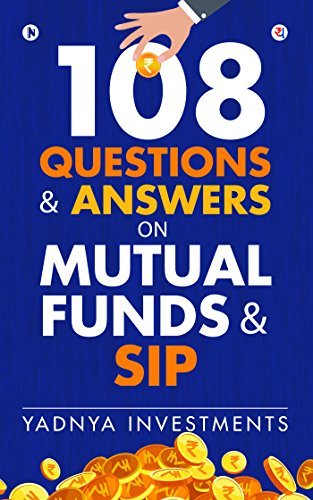What do you think?
Rate this book


168 pages, Paperback
As evident from the title, the book deals with the mutual fund and SIP. The book which I am reading is published in 2017 by notionpress.com. It is written by Yadnya Investment, an online portal for financial advice for the Indians. The book contains 168 pages and it is a collection of mutual fund related financial jargons and doubts explained in simple terms. Let’s discover what the book is about and how the book fairs in all the aspects.
The book revolves around Mutual funds and SIP systems prevalent in Indian Market. As such, it bids to simplify and explain the current mutual fund market in India. Any reader who is curious to know about various facets of a mutual fund will benefit considerably from the book. The Yadnya Investment even has its YouTube channel which will further solidify the content, although the book is a standalone version and can be read on its own.
Although I was aware of the fact the book is laid down in an FAQ manner, I never expected the book to be so reader-friendly. The book explains the common FAQs asked by the Indian investors regarding mutual fund and systematic transactions such as SIP, STP, and SWP. Since I belong to the engineering background, I was suspicious at first, thinking that the book might simply contain a list of questions and answers. But to my utter surprise, the book was organized in a manner that any layman can read it from cover to cover.
One thing that I would say in advance to the readers is that since the book is organized in a way, you would come across some term which might not be explained in earlier parts. But if you keep patience, then you will realize that authors have explained almost all the terms and jargons that are either relevant or that come in earlier parts of the book. And not just about the funds, but the authors have also explained the process of how you should choose the ideal fund for you.
The book is supplemented with different references that will help readers to further understand the topic in a holistic manner. In this journey, I took the help of invetopedia.com and moneycontrol.com (Note: This is completely my personal experience and I am not doing any paid advertisement in any form). In this way, I could quickly grasp the finance concepts relevant to me as an investor.
The downside of this book is that it is meant for the Indian financial market only. So, all the examples and figures used in the book are only useful for Indian investors. Also, since the book cannot be updated like web pages, you will need to refer online to know the current values and figures.
Now, when it comes to reviewing I would also say regarding the physical structure of the book. The pages were made of excellent quality, but I found the cover a bit disappointing as my book cover was somehow bent outward and it was stiff, which made it difficult for me to change the pages. Nevertheless, the excellent content made up for these slight inconveniences.
I understand that the text below will be iterative but for those who are skipping through the article will find it useful. I would recommend this book to all the beginner Indian investors who are interested to learn about Mutual funds and methods of getting into it. Age is not the factor here as the language is plain and simple. I would suggest that you should complement this book with online resources for holistic learning.
For experts or those who are looking for specific advice may better seek financial advice rather than refereeing to the book. Nonetheless, it will serve as a fine refresher course.